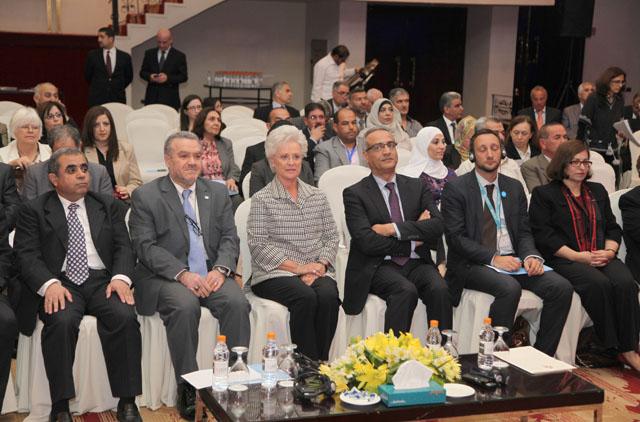You are here
'200 cases of leishmaniasis recorded in Jordan annually'
By Laila Azzeh - Jun 01,2016 - Last updated at Jun 01,2016

The sandflies that transmit the Leishmania parasite are only about one-third the size of typical mosquitoes or even smaller (Illustration courtesy of CDC/PHIL, DPDx)
AMMAN — Around 200 cases of the parasitic disease, leishmaniasis, have been reported in Jordan annually in recent years, a health official said on Tuesday.
Approximately half of these cases were Syrians, most of whom had contracted the disease in their country, said Mohammad Abdullat, the director of the Health Ministry's communicable diseases control department.
Instances of the disease, which is transmitted via bites from sandflies, are lower in Jordan than in other countries in the region, Abdullat told The Jordan Times.
"While the disease does not threaten public health, it leaves scars and deformities in the affected area. Sandflies are known to attack uncovered areas of the body, especially the face," he added.
"We are cooperating with the concerned agencies to detect all cases and provide them with free treatment. The disease is curable when detected at an early stage," Abdullat said, adding that sandflies exist in hot regions.
Leishmaniasis is caused by infection with Leishmania parasites, which are spread by the bite of phlebotomine sand flies, according to the Centres for Disease Control and Prevention.
There are several different forms of leishmaniasis in people. The most common forms are coetaneous leishmaniasis, which causes skin sores, and visceral leishmaniasis, which affects several internal organs (usually spleen, liver and bone marrow), the US agency says on its website.
"These flies are found in the Jordan Valley, Qweira and desert areas. Only those infected by Leishmaniasis are a threat," Abdullat said, noting that the disease is not transmitted through human contact.
Earlier this week, the UK’s Daily Mail reported that the "disfiguring tropical disease that had been contained to Syria has now spread across the Middle East".
"The disease had been contained to Syria," particularly to regions under Daesh control such as Raqqa, Deir Ezzor and Hasakah, according to the report, which noted that the war, chronic lack of water and bombed out buildings "created a ripe breeding ground for the sandflies and allowed the disease to thrive".
Related Articles
HRH Princess Muna, WHO patron for nursing and midwifery in the Eastern Mediterranean region, on Monday attended a ceremony marking World Health Day, this year held under the theme “Small bite, big threat”.
AMMAN — Three cases of leishmaniasis have been detected in Tafileh Governorate’s Barbeita area and are currently being treated, the Health M
AL KARAMAH — Syria — Inside a dank clinic in the north of war-torn Syria, a girl covered in scabs wails and tries to wriggl















